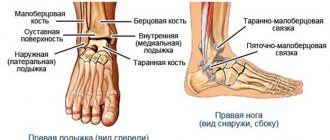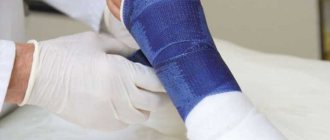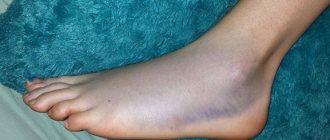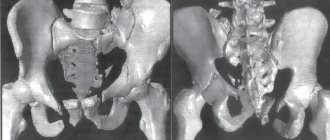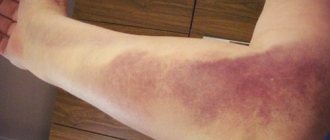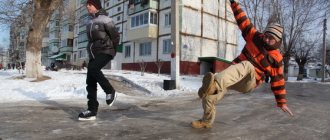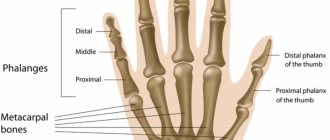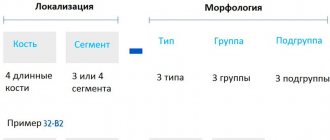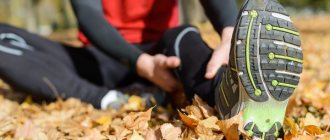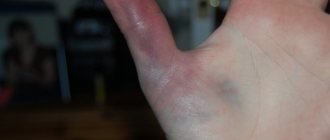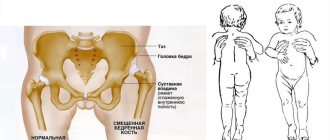Healing of bones after a fracture
Symptoms of a bone fracture are acute pain, tissue swelling, and unusual mobility of the broken bone. With multiple fractures, traumatic shock is possible. The fracture area is usually deformed. If bone fragments are not set correctly, the bone may heal crookedly. Such consequences always have to be corrected, especially when it comes to broken limbs. Incorrectly fused nasal bones are often left unattended, leading to facial asymmetry and subsequent breathing problems.
In diagnosing bone fractures and monitoring their proper healing, radiography plays a major role; all main appointments are made only after X-rays.
Folk remedies
Drug treatment, proper nutrition, physiotherapy and exercise therapy are excellent methods for restoring a damaged limb, but traditional medicine should not be neglected.
So eggshells are an excellent remedy containing huge amounts of calcium. It is ground to a powder and consumed every day. Eggs from domestic chicken, and absolutely healthy ones, are better suited for this purpose.
However, calcium is better absorbed in the form of vitamin-mineral complexes (this includes the above-mentioned calcium D3 nycomed and any other complexes containing calcium and vitamin D3).
The fusion of bones is influenced by a wide variety of processes: physical therapy, proper and healthy nutrition, massage, physiotherapy, and most importantly, the patient’s desire to get better as quickly as possible.
How to speed up bone recovery
After a fracture, when first aid is provided and the broken bone is fixed in the correct position, the process of its recovery begins, which takes place in four phases and takes from two to six months:
- The beginning of active division of bone cells, activation of blood circulation in the fracture area.
- Formation of osteoid bone tissue - without mineralization of the intercellular substance. It is also called primary callus.
- Formation of bone structure, complete restoration of blood circulation at the fracture site and mineralization of bone tissue.
- Restoration of the medullary canal and periosteum.
In recent years, traumatologists have increasingly noted slow bone healing in patients. This is due to an unhealthy lifestyle, constant stress, and metabolic disorders. When healing of fractures is slow, shock wave therapy is successfully used, which helps restore blood circulation and form callus in three to six procedures. Pain during bone fusion under the influence of a shock wave is minimized. The presence of metal fixing structures (Ilizarov apparatus) is not a contraindication for a course of shock wave therapy. Wave therapy may also be prescribed after cast removal to improve muscle tone and maintain healthy circulation.
Peculiarities
In children and people in middle age, bones grow together quite quickly. But in older patients, the bones become thinner and more brittle, which slows down consolidation.
Bone density becomes much less, causing osteoporosis. Osteoporosis affects most people in old age. Only for many people this disease manifests itself differently. For example, people who lead a sedentary lifestyle develop osteoporosis much more often than people who are more active.
There are approximate healing times for a fracture depending on the location. Thus, a fracture of the phalanges of the fingers heals in about 2 weeks, and a radial fracture in a typical location takes an average of 5 weeks.
However, there is no strictly defined time frame for bone consolidation. Everything depends on the human body. For some people, the bone may heal in a couple of months, while for others it will take more than a year to heal.
If bone displacement is not observed during the fracture, a plaster cast is applied, and then a course of treatment is prescribed: medications, massage treatments, physiotherapy, ointments and compresses. If a displacement is detected during diagnosis, surgical intervention or reposition is performed.
Proper nutrition and physical activity
For the fastest healing of a broken bone and a return to normal life, it is necessary to follow a daily routine, eat right, do not neglect physical activity, and eliminate bad habits.
- Avoid stress, get enough sleep. Your body works in a forced mode during recovery, do not overload it.
- Eat a balanced diet to provide your body with the necessary energy balance. Proteins, vitamins, and microelements should be present in your diet in large quantities. Pay special attention to dairy products that contain calcium, which is necessary for bone healing. The doctor may additionally prescribe calcium-containing medications.
- Do not smoke. Smoking promotes vasospasm and metabolic disorders. This slows down the recovery processes.
- Painkillers and anti-inflammatory drugs should be taken only as prescribed by a doctor.
- Do not neglect physical therapy, which will allow you to restore muscle tone. Don't overdo it with physical activity, but don't give in to the desire to feel sorry for yourself once again. Approach physical activity wisely.
If you want to speed up bone healing and return to your normal lifestyle as soon as possible, you should follow all the doctor’s recommendations and carefully monitor your condition. A course of shock wave therapy is available in the diagnostic and treatment center.
Physiotherapy
Physiotherapy allows bones to heal much faster, while possessing wonderful properties. Physiotherapeutic procedures are prescribed on the third day after injury, if the fracture is simple. Physiotherapy can relieve swelling, reduce pain, and promote rapid resorption of hemorrhages and bone tissue regeneration.
For delayed consolidation, calcium electrophoresis has worked well. Magnetic therapy helps relieve swelling.
Exercise therapy
During the rehabilitation process, the patient is required to be prescribed a course of exercise therapy. Initially, a person who has been injured must visit a special office, where a specialized specialist will give useful recommendations. Exercises will not only improve the health of the body, but will also contribute to the rapid recovery of the damaged limb. But in order to avoid getting injured again, performing physical exercises requires a number of restrictions. In particular, if severe physical pain is felt while performing an exercise, they should be stopped.
Walking is fundamental to exercise therapy, so it should be made part of your life. You need to start walking for half an hour 2 times a week. If after walking you do not feel any discomfort or severe pain, the number of days can be increased to 5 times a week. In addition to walking, patients are recommended to do a number of specific exercises and also go to the gym.
Massage
After removing the plaster cast, the patient is prescribed massage treatments. With their help, you can relieve swelling, restore normal blood circulation and joint function. It is recommended to use pine needle oil for massage. Herbal medicines will help relieve pain, including:
- Diclosan cream;
- Balm by V. Dikul.
Main causes of injury.
There are general and local reasons due to which the process of bone tissue restoration slows down. These include:
- Serious diseases (diabetes mellitus, osteoporosis)
- Bad habits (smoking, alcohol)
- Exhaustion of the body
- Old age (over 60 years old)
- Numerous fractures
- Dysmenorrhea in women
- Penetration of infection or foreign bodies into the wound
- Serious soft tissue damage
- Circulatory disorders
First aid for a fracture
The rate of healing of broken bones is greatly influenced by the provision of first aid for fractures. If it is an open fracture, it is very important that the wound does not get infected in order to avoid inflammation and suppuration in this area. Therefore, the damaged area needs to be disinfected; for this, the circumference of the wound should be treated with an antiseptic and covered with a sterile napkin until the medical team arrives.
To transport the victim to a medical facility, it is necessary to organize immobilization of the limb. To complete the task, they use available means - plywood, flat boards, tree branches, which are secured to the injured limb with a cloth or bandage. If a person has a spinal injury, then a solid stretcher or improvised means, such as flat boards, on which the patient must be carefully laid, are used for transportation.
The timing of consolidation of fractures directly depends on the provision of first aid and emergency transportation of the victim to the hospital.
Surgical treatment of patients with pseudarthrosis
Surgical treatment of patients with pseudarthrosis has been used for a long time, and its methods are being improved as science develops. For pseudarthrosis that formed after a closed fracture, at one time the method of choice was metal osteosynthesis with bone grafting.
After exposing the area, the pseudarthrosis is freed from scars and the bone fragments are refreshed, which, after reposition, are firmly fixed with a metal rod killed by the intramedullary. Then the area of pseudarthrosis is covered with a bone autograft, which is taken from the proximal metaepiphysis of the tibia or iliac wing; allografts (preserved cadaveric bones) or xenografts (bovine bone) are used. The graft is closely fitted with a spongy surface to the exposed layer of the pseudarthrosis area and firmly fixed with wire or bolts. The operation is completed by applying a plaster cast, which immobilizes the limb until the bone heals.
With tight pseudarthrosis without displacement of fragments, good results are achieved using a less traumatic operation - bone grafting with Khakhutov. After exposing the area of pseudarthrosis from the side of the subperiosteal wound, grafts of the same width are cut out from both fragments. Their length in one of the fragments should be 2/s, and in the second - 1/s of the total length of the graft. The grafts are moved so that the longer part covers the pseudarthrosis gap, and the shorter part fills the resulting defect after movement. After surgery, the limb is fixed with a plaster cast until the bone heals.
decortication surgery , has proven its worth . After opening all the soft tissues in the area of pseudarthrosis, thin plates of the cortex are knocked down with a subperiosteal chisel so that they are contained on the periosteum with the adjacent soft tissues. After performing circular decortication, the wound is sutured and a plaster cast is applied.
To stimulate reparative osteogenesis and improve blood supply to the pseudarthrosis area, some surgeons use a chisel to make incisions into the callus and bone to a depth of 2-3 mm in the form of a fir cone. The treatment of patients with infected pseudarthrosis complicated by osteomyelitis and after open fractures was very problematic. Treatment was delayed for many months and even years, since open surgical treatment can be carried out no earlier than 6 months after the healing of the festering wound or closure of the fistula.
To accelerate the healing of infected pseudarthrosis, the Steward-Bogdanov operation, or extrafocal bypass polysynostosis, was used, and for defects of the tibia, the Hahn operation was used - moving the fibula under the tibia.
Ilizarov apparatus into traumatological practice opened a new era, which radically changed the treatment tactics for pseudarthrosis, including those complicated by osteomyelitis and bone defects.
The use of hardware osteosynthesis eliminates deformation, creates stable fixation of the damaged segment, provides movement in adjacent joints, and allows loading the limb. However, with hypovascular pseudarthrosis, the process of bone fusion even in the apparatus remains slow, and therefore it is necessary to additionally apply bone grafting.
Patients with suppurative processes in the area of pseudarthrosis are treated according to the general rules of purulent surgery under conditions of hardware osteosynthesis.
For pseudarthrosis complicated by osteomyelitis , even when there is a fistula, the use of the device and the creation of stable fixation leads to increased regeneration, attenuation of the inflammatory process, closure of the fistula and bone fusion. If there is a formed sequestration, sequestrectomy is performed in the device or before its application. With the help of hardware osteosynthesis, it is possible to shorten the treatment period for patients and achieve bone fusion.
For bone defects, a 4-ring (or more) compression-distraction device is applied, a unipolar, and for large defects, a bipolar osteotomy (compactotomy) is performed in the metaphyseal (cancellous) area of the bone. After the formation of the primary cellular regenerate (7-10 days), the middle bone fragment begins to be lowered towards the defect. Lowering is carried out very slowly, 1 mm per day (in one or two steps of 0.5 mm), bringing the middle rings of the device closer together. As the space in the osteotomy area expands, it is filled with new regenerate and gradually grows.
When the ends of bone fragments approach each other at the site of the former defect, some compression is created to cause necrobiosis and stimulate the local reparative process and fusion of the fragments. For complete bone fusion, the device should be kept in a neutral position for 2.5-4 months. This treatment method allows you to eliminate bone defects over a significant area (15 cm or more).
Healing rate of childhood fractures
In a child, fracture treatment occurs 30% faster than in adults. This is due to the high content of ossein and protein in the children's skeleton. The periosteum is thicker and has excellent blood supply. The skeleton of children is constantly increasing, and the presence of growth plates accelerates bone fusion even more. In children from six to twelve years of age, with damaged bone tissue, correction of fragments is observed without surgical intervention, and therefore, in most situations, specialists make do only with the application of plaster.
What can slow down this process
Although traumatized bones are the most significant factor affecting how long it takes to heal, there are other things that can prolong this time, such as:
- Age. The fact is that in the process of aging, tissue regeneration begins to occur more and more slowly, and complete renewal of fibers and cells is not always possible. And the body of young children tolerates fractures well, which heal in them with virtually no consequences and in a short time.
- Features of the bone. For obvious reasons, healing large bones is a much longer process than healing small bones. It is also important to pay attention to the shape of the bone (tortuous tissues will take longer to heal).
- Timeliness of therapy. As mentioned at the very beginning of this material, the success of fusion of any bones largely depends on the timing of contacting a specialist.
- Unforeseen violations. The most difficult situations are those in which the fracture is complicated by the penetration of bone fragments between its parts or by severe displacement.
- First aid. The period of bone healing also depends on how competently first aid was provided. If the spine or ribs are fractured, you should never move the person until the ambulance arrives, as this may complicate the situation. An independent attempt to reduce even a slight fracture will also not lead to anything good; the injury only needs to be recorded.
- Number of simultaneous fractures. A lot of energy and microelements are spent on healing a fracture, and if there are several similar injuries, then there is no longer enough calcium for their healing.
- Hormonal problems, impaired metabolism, excess body weight. All violations of this kind also affect the period of fusion.
If you listen to all the recommendations of specialists and follow them exactly, then you should not have problems with the healing of the fracture, but in some situations you must do everything to speed up and improve the healing process.
